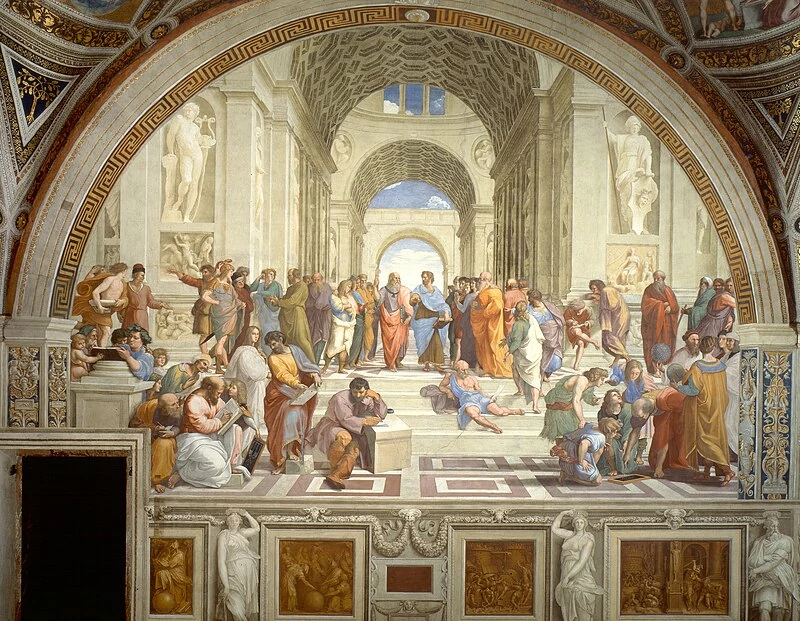
Perspective in art refers to the technique used to represent three-dimensional objects and depth on a two-dimensional drawing surface. It creates the illusion of distance and volume on a flat surface like canvas.
The most common types of perspective are linear perspective and atmospheric perspective.
Linear perspective uses vanishing points and converging lines, while atmospheric perspective deals with color and clarity to suggest depth.
Perspective techniques help artists depict a three-dimensional space realistically or stylistically.
Take, for instance, Leonardo da Vinci’s “The Last Supper.” The lines of the walls and ceiling converge at a single point behind Christ’s head, creating a sense of depth and distance.
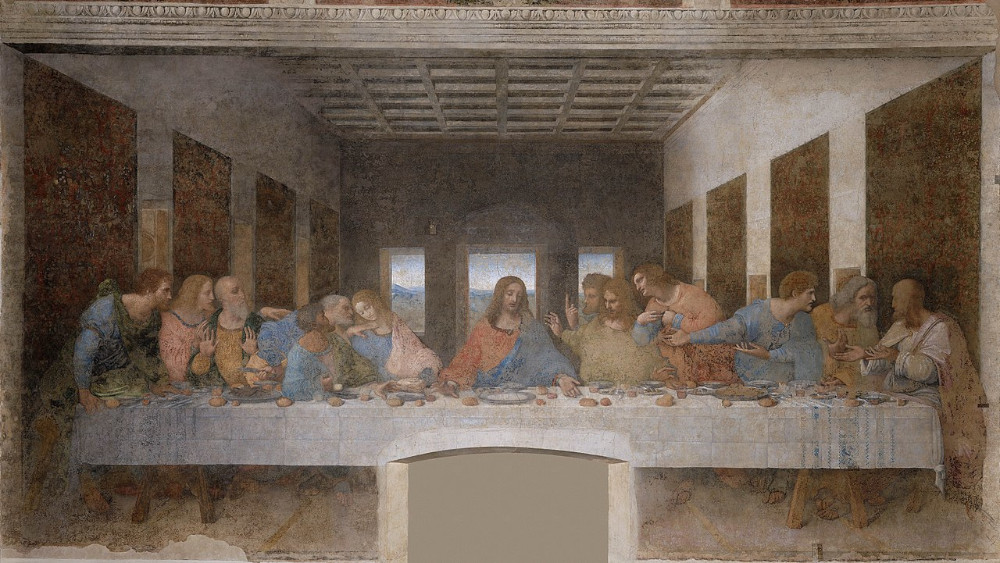
This is a classic example of linear perspective, one of the many tools in an artist’s kit to create a convincing illusion of reality.
In this blog post, we’ll delve into the fascinating world of perspective in art, exploring its elements, different types, and even common errors artists make.
Building on this understanding of perspective, let’s delve into the history of perspective.
The technique we now recognize as perspective was largely formalized during the Italian Renaissance in the early 15th century.
The architect Filippo Brunelleschi played a key role in rediscovering the mathematical laws of perspective, including the pivotal concept of the vanishing point.
These principles were soon applied in painting, with artists like Masaccio leading the way. His fresco “The Holy Trinity” is a testament to this new approach, creating a sense of spatial depth that was revolutionary for its time.
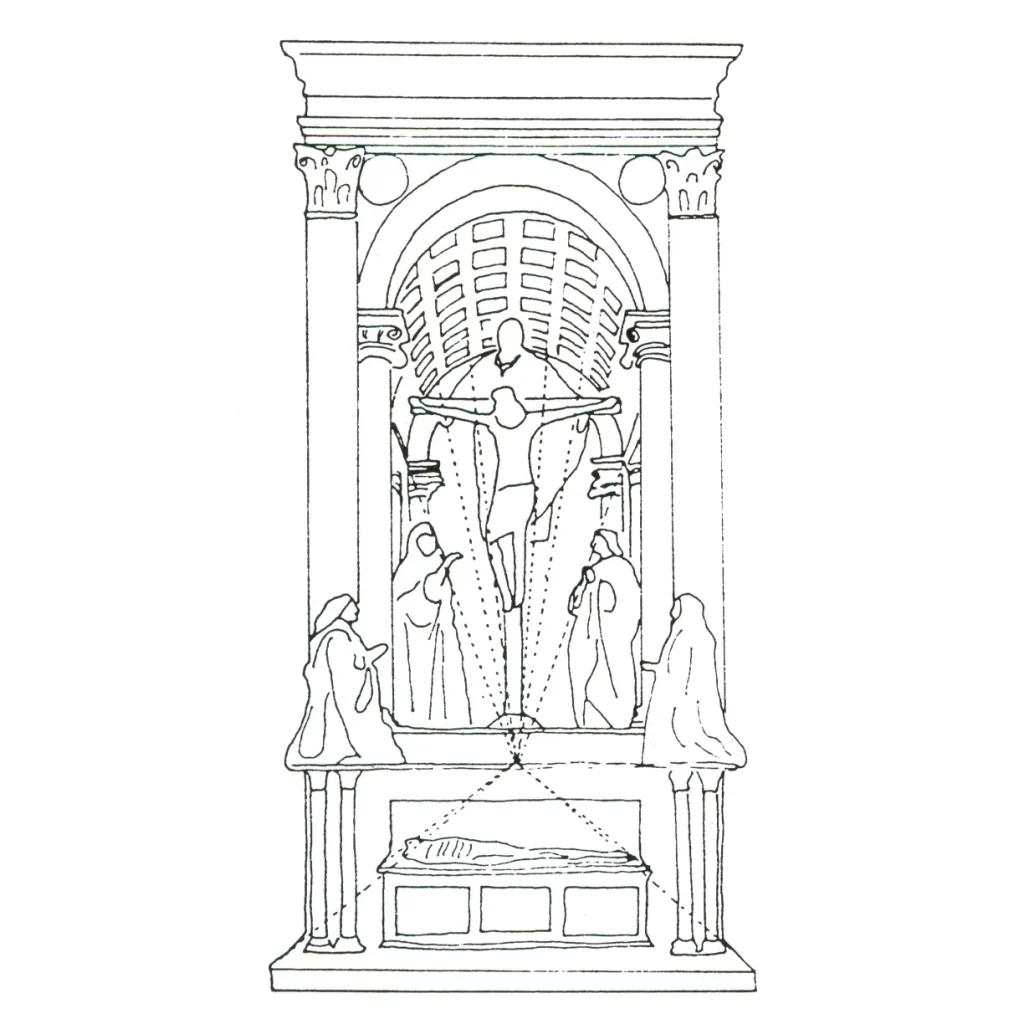
However, as art evolved, so did the use of perspective.
By the end of the 19th century, artists like Paul Cézanne began challenging traditional norms, opting to flatten the conventional Renaissance picture space. This marked a significant shift from a linear perspective, paving the way for Cubism and other modern art movements in the 20th century.
Diving deeper into perspective in art, let’s explore the key elements that can be manipulated to create convincing illusions.
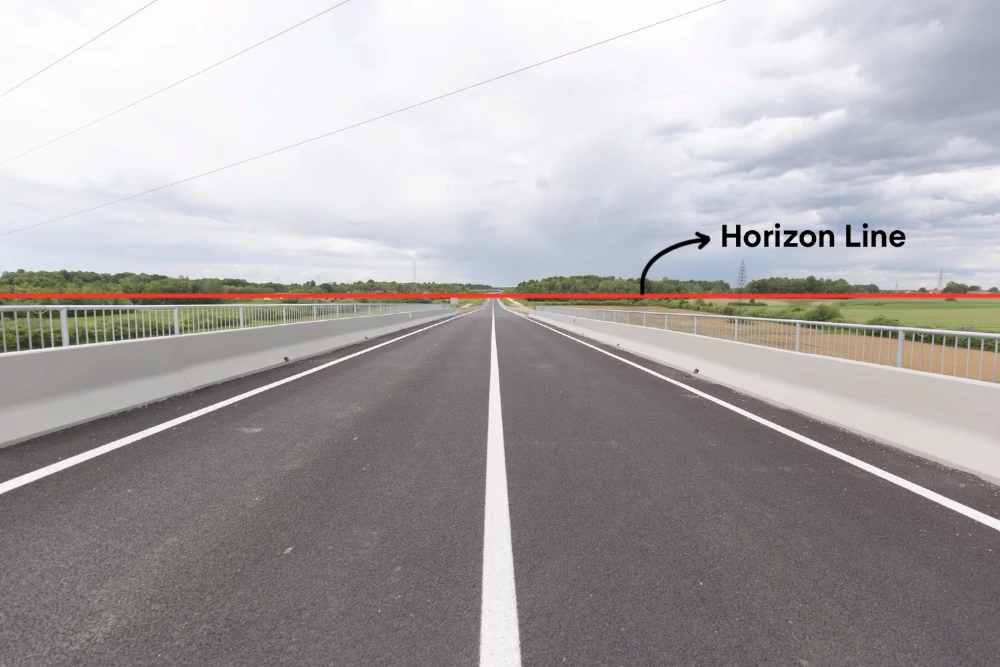
The horizon line, also known as the eye level, represents the farthest point of sight where the sky meets the land or water, forming a boundary. This line serves as a reference point, indicating the viewer’s eye level when observing an object, an interior, or an exterior scene.
The placement of the horizon line can dramatically alter the viewer’s perception of the scene. A high horizon line can make the viewer feel like they are looking down on a scene, while a low horizon line can make it seem like the viewer is looking up.
Understanding and effectively utilizing the horizon line is crucial for creating realistic, proportionate drawings with depth and dimension.
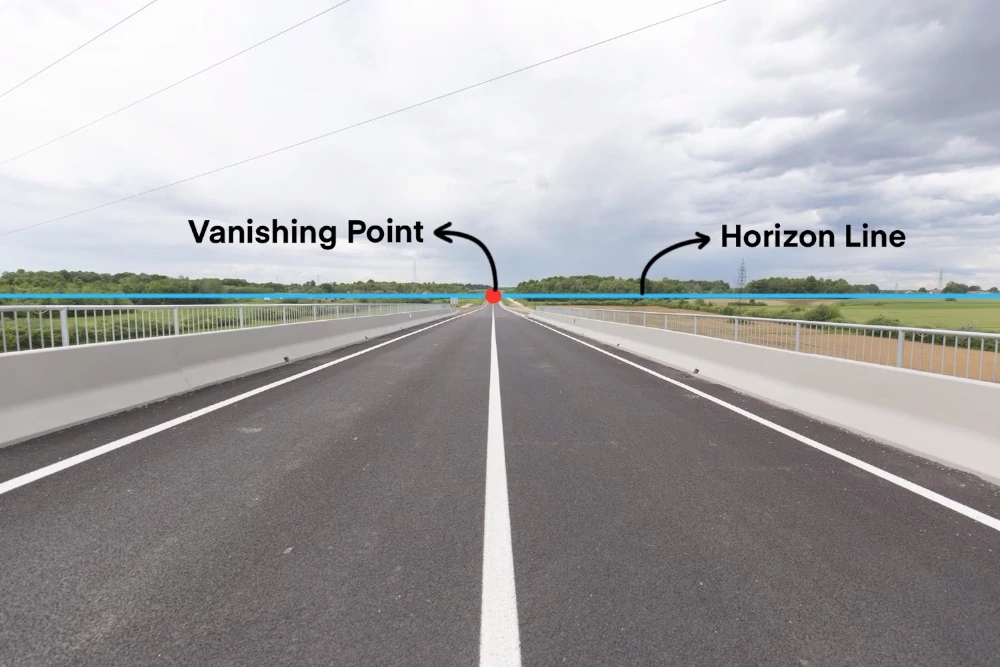
The vanishing point is the spot on the horizon line where all parallel lines appear to converge, essentially ‘vanishing’ from the viewer’s sight.
As objects recede into the distance, they seem to diminish in size, eventually seeming to merge at this vanishing point. This is a natural phenomenon that our eyes perceive in real life, replicated in the art to create a convincing sense of spatial depth and realism.
If you imagine a straight road stretching into the distance, the sides of the road seem to get closer together the further they extend from a vantage point. Eventually, they appear to meet at a single distant point – this is the vanishing point.
By accurately applying this concept, artists can imbue their flat artwork with a realistic perception of depth, distance, and three-dimensionality.
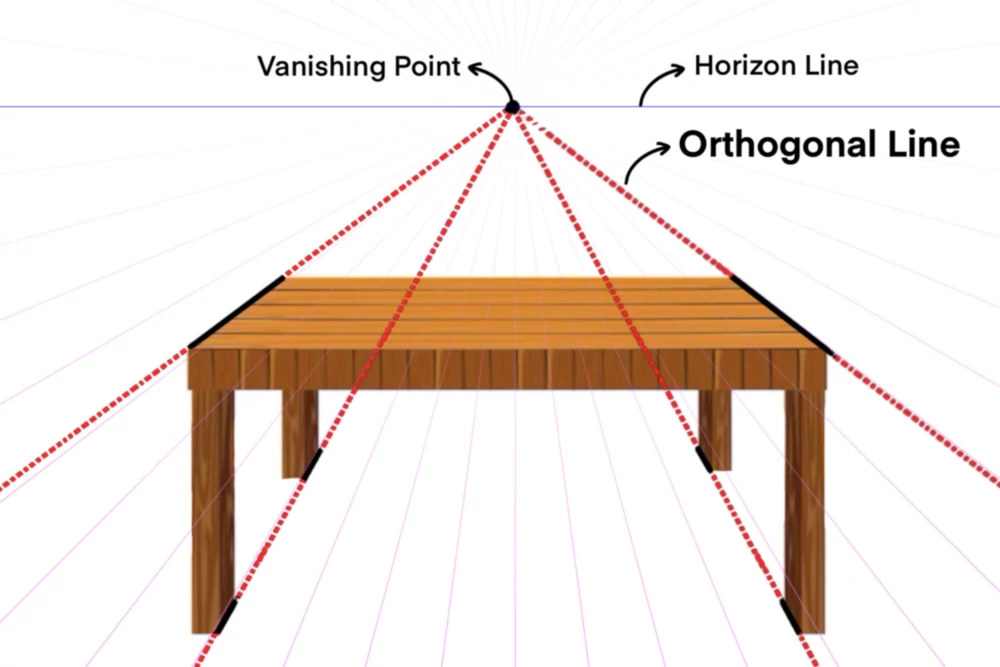
Orthogonal lines in the perspective drawing are imaginary lines that recede toward the vanishing point on the horizon line. They are crucial in creating the illusion of depth and three-dimensionality on a two-dimensional surface.
Orthogonal means “at right angles,” which is how these lines relate to the picture plane in the one-point perspective.
In a two-point perspective, orthogonal lines are at right angles. Although not always visible in the final artwork, these lines guide the artist in accurately depicting spatial relationships and maintaining a realistic perspective.
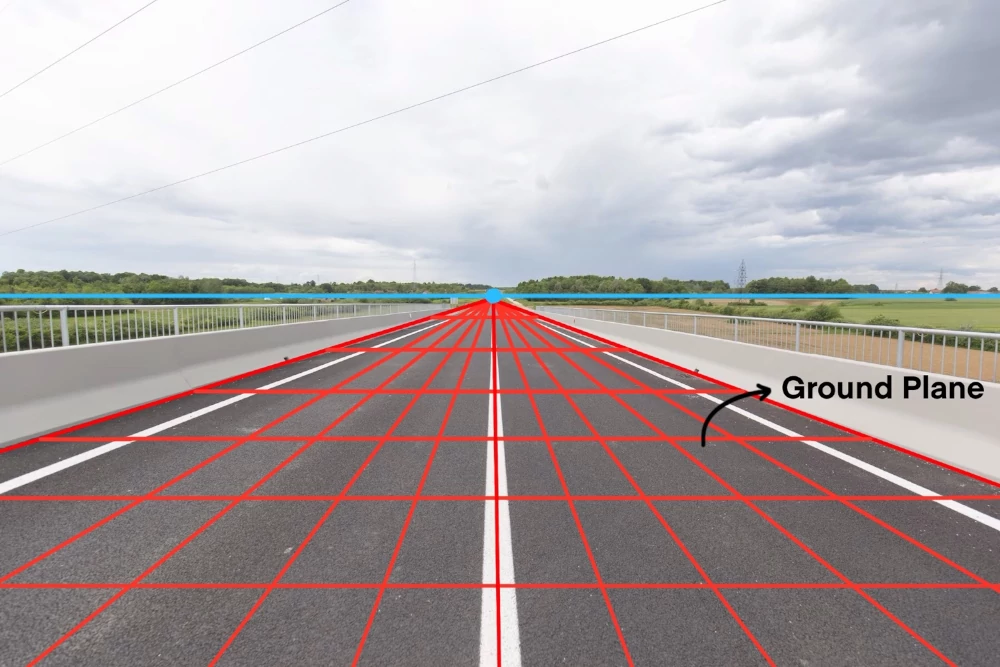
The ground plane in perspective drawing refers to the horizontal surface below the horizon line, which could represent land or water. It establishes the sense of depth and spatial relationships in a drawing or painting.
The ground plane is often depicted as level or flat in a typical perspective drawing. Parallel lines drawn on this plane appear to converge at a vanishing point on the horizon line, giving the illusion of depth and distance.
However, if the ground plane were sloped or hilly, the vanishing point created by the path’s parallel lines may not rest on the horizon and may appear as if it’s on an inclined plane. This can create a more dynamic and complex sense of depth and perspective in the artwork.
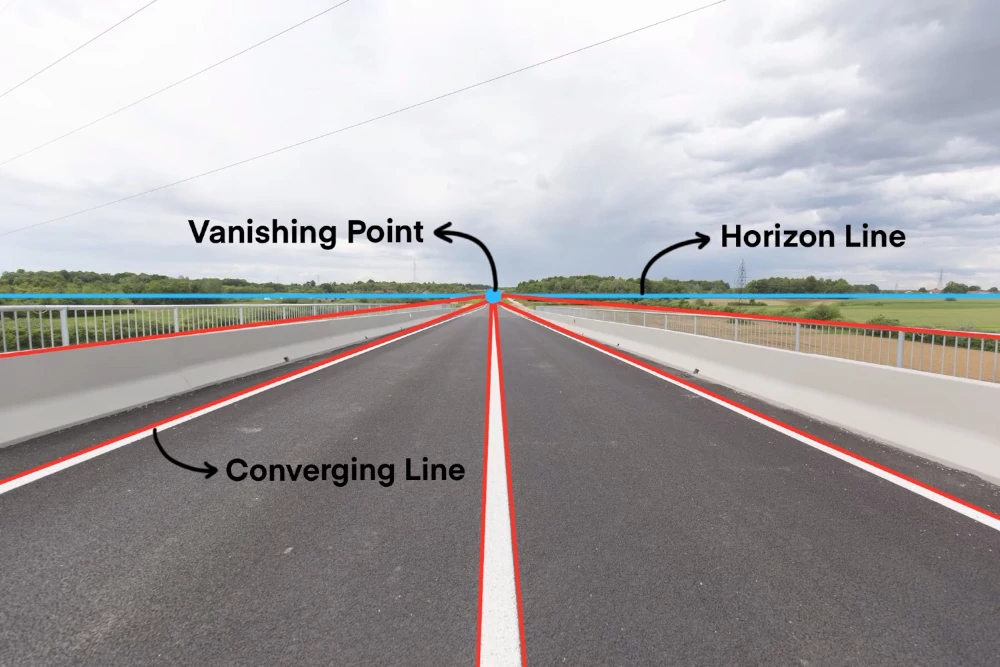
Converging lines in perspective art are lines that appear to meet at a common point as they recede into the distance, creating an illusion of depth on a two-dimensional surface. This phenomenon, known as the vanishing point, is a fundamental concept in perspective drawing.
For instance, parallel lines, such as railway tracks, converge at a distance. Converging lines create a sense of depth, distance, and dynamism, making flat images appear three-dimensional and more engaging to the viewer.
Now that we have understood the elements of perspective let’s delve deeper into the different types of perspectives in art. This section will guide you through the various forms and how they each contribute to creating depth and realism in artworks.
Linear perspective is an artistic technique that uses mathematical principles to create a realistic representation of space, depth, and scale in an artwork. It relies on understanding how objects recede into the distance when viewed from one point, known as the vanishing point.
Essential components for creating linear perspective include:
Linear perspective can be categorized into one-point, two-point, and three-point perspectives, depending on the number of vanishing points in the composition.
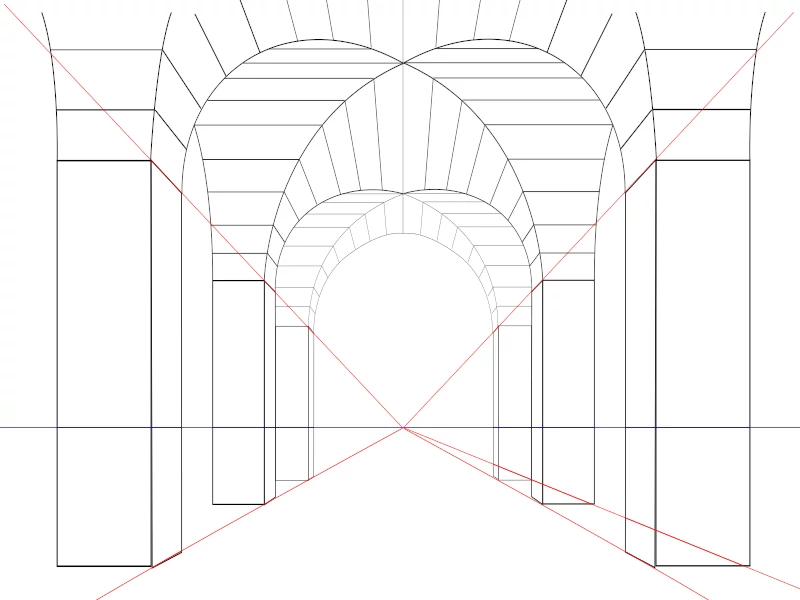
One-point perspective is a technique in visual art that utilizes one vanishing point on the horizon line to depict depth and distance. It’s typically used for compositions viewed straight on, where all parallel lines appear to converge towards this solitary point.
Think of a long, straight road whose sides seem to merge at a distant spot on the horizon. Similarly, when viewing an object or scene directly, the sides seem to retreat towards a single vanishing point, thus creating an illusion of depth.
This technique allows artists to depict spatial depth and realism in their work, creating engaging visuals that appear to extend beyond the confines of the flat canvas.
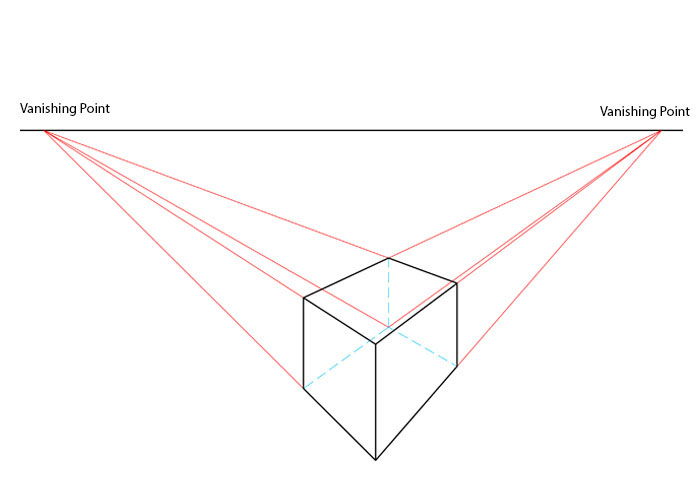
In a two-point perspective, an object is rendered using two vanishing points on the horizon line. This perspective is commonly applied when the object or scene is viewed from an angle rather than directly from the front, resulting in two sets of lines that recede towards two different points on the horizon.
For instance, if you draw a building from its corner, you see two faces of the structure. The edges of these sides, represented by lines in your drawing, extend towards and converge at the two different vanishing points.
This creates a realistic depiction of the building’s dimensional structure, capturing how its size appears to diminish as it extends away from the viewer.
This method proves pivotal in accurately representing spatial relationships within a scene, adding depth and realism to the artwork.
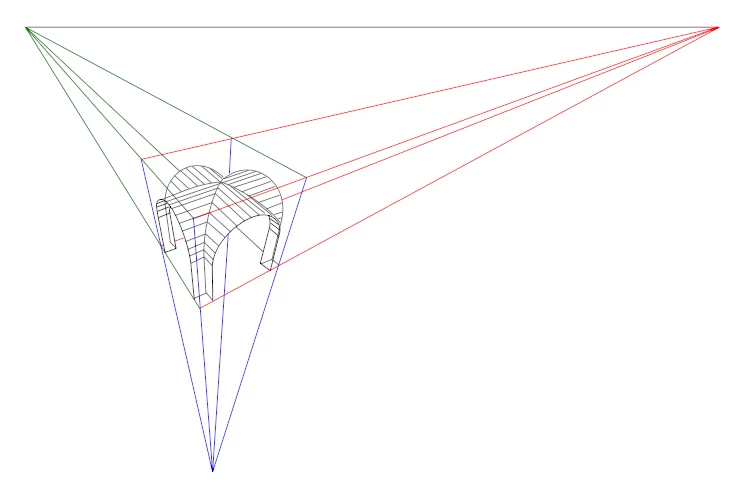
The three-point perspective uses three vanishing points to portray objects or scenes with notable depth or height.
This technique is commonly used when observing tall structures like skyscrapers or deep canyons, where a third vanishing point appears above or below the horizon line.
For example, consider drawing a towering skyscraper from a worm-eye view. You’ll find two vanishing points on the horizon, where the building’s sides appear to converge, and an additional third point above, where the vertical lines of the skyscraper seem to meet.
This perspective delivers a sense of scale and depth, conveying the immense height of the skyscraper.

Aerial perspective, or atmospheric perspective, refers to how the atmosphere impacts the visual perception of an object viewed from a distance.
This technique mimics how light behaves in real life, reducing distant objects’ intensity and color saturation to simulate depth.
As the distance between an observer and an object increases, the object’s contrast against its background and the contrast of its details diminishes.
Moreover, the colors of the distant objects also lose saturation and tend to blend with the background color, typically taking on a bluish tint.
This is due to the scattering of short-wavelength light in the atmosphere, like blue and violet light. The distant objects might adopt a reddish hue under certain conditions, such as at sunrise or sunset.
An aerial perspective is a vital tool in art, especially landscape painting, to accurately depict depth and distance.
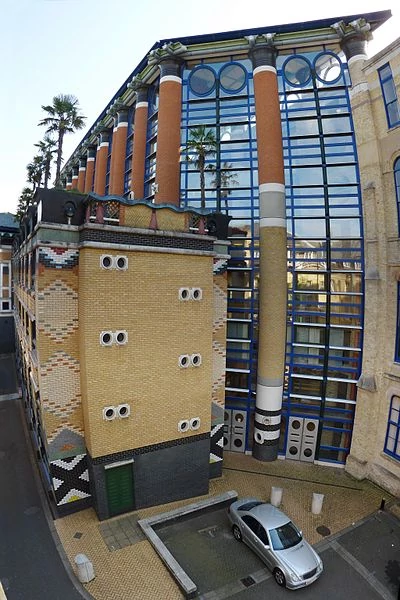
Curvilinear, or five-point perspective, is a drawing method that creates a wide-angle ‘fisheye’ view of a scene on a flat surface.
It uses curved lines and straight converging ones to mimic the image on the retina, providing a more accurate representation of visual space than the traditional linear perspective, which only uses straight lines and can appear distorted at the edges.
This technique involves placing four vanishing points around a circle, with a fifth in the center. All vertical lines bend towards the top and bottom points, horizontal lines bend towards the left and right points, and lines going into the picture plane go straight to the center point.
An example of this technique is Parmigianino’s “Self-portrait in a Convex Mirror,” where the artist’s reflection and the surrounding room are depicted in a distorted, spherical image, capturing a wider field of view.
Drawing in perspective is a skill that requires understanding and practice. However, even experienced artists can sometimes make errors. Here are some common mistakes that artists often make when drawing in perspective:
Accidental Errors (Type I): These are unintentional mistakes that do not follow any logical pattern. For instance, a vanishing line that unintentionally veers off at an angle can be considered an accidental error.
Ad Hoc Errors (Type II): These are conscious errors made for practical reasons. For example, when drawing a paved floor interrupted by steps, an artist might alter the vanishing lines at the steps to make the error less noticeable. These errors are understandable as they follow practical logic.
Systematic Errors (Type III): These errors are part of a coherent network based on certain rules of construction or principles of organization. For instance, in Fra Filippo Lippi’s “Madonna and Child,” the vanishing lines converge at the Virgin’s eyes, which could be seen as an artistic expression of a binocular vision.
Incorrect Foreshortening: Foreshortening is a technique that creates the illusion of an object receding strongly into the distance or background. Errors in foreshortening can lead to objects appearing distorted. For example, if the spacing between horizontal lines does not diminish rapidly enough as they approach the vanishing point, the resulting image can appear distorted.
Over-Foreshortening: This occurs when the spaces between the horizontal lines diminish too rapidly as they approach the vanishing line, resulting in a network of convex diagonals.
Perspective in art is more than just a technique. It’s a language that communicates depth, space, and realism in a two-dimensional medium.
Remember that mastering perspective is a journey.
Practice, observe, and don’t be disheartened by errors—they’re stepping stones to improvement. A deeper understanding of perspective can enrich your appreciation of artworks and the skill behind them.
So, keep perspective in mind whether you’re creating art or simply admiring it. It’s the bridge that connects the viewer, the artist, and the artwork, transforming lines and colors into lifelike scenes and stories.
If you are a beginner looking to hone your drawing skills, check out our courses “Fundamentals of Drawing” and “Learn to Draw in 21 Days.”
If you are interested in digital drawing, our courses “Digital Drawing in Procreate for Beginners,” “Digital Illustration for Beginners,” and “Introduction to Digital Drawing” are perfect for you.
You can also check out the collection of our online art courses to find the perfect course for yourself.
If you’re a novice artist aiming to refine your drawing abilities, our “Fundamentals of Drawing” and “Learn to Draw in 21 Days” courses are ideal for you.
For those interested in exploring the digital art realm, we offer beginner-friendly courses such as “Digital Drawing in Procreate for Beginners,” “Digital Illustration for Beginners,” and “Introduction to Digital Drawing.”
You can also browse through the extensive collection of our online art courses to find the one that best suits your needs and interests.
Achei interessante e uma nomenclatura que quaLquer um entende. Fiquei curiosa por ver mais e mais obras e me dedicar a Arte. Irei ver as obras citadas. Amei tudo que escreveu.
Reply